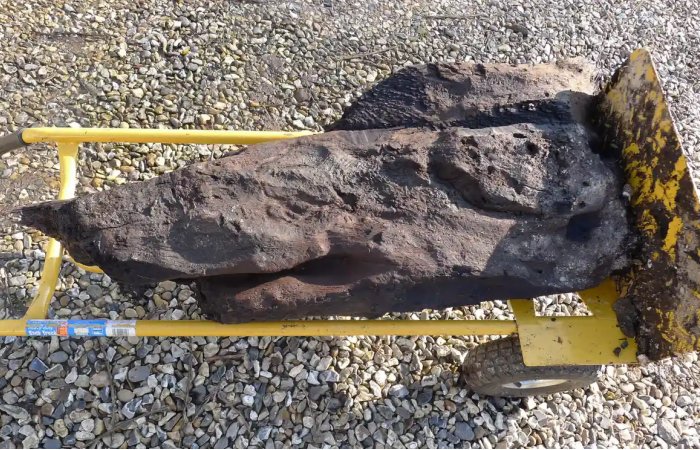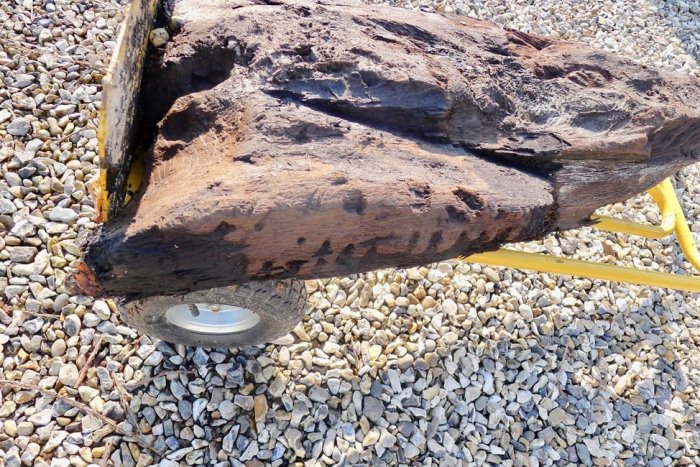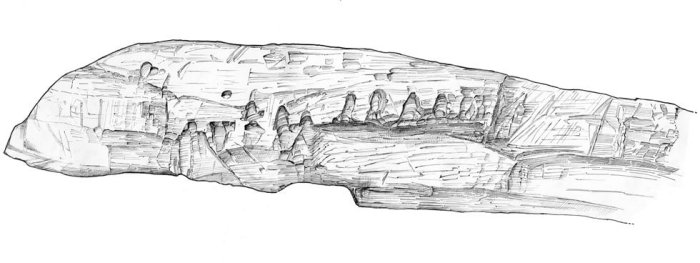Jan Bartek – AncientPages.com – It was a chance discovery. The piece of wood could have easily gone onto the bonfire or been treated as trash. Luckily, Derek Fawcett, landowner, and retired urological surgeon, decided to take a closer look at the wood.

The Boxford Timber discovered in Berkshire. At more than 6,000 years old, it is Britain’s oldest carved wood. © Derek Fawcett.
Lying in peat in excellent condition, the large piece of wood was found during the construction of a workshop in Boxford, Berkshire, United Kingdom.
Experts from Historic England working with scientists from Nottingham Tree-ring Dating Laboratory and The Centre for Isotope Research, University of Groningen, carried out radiocarbon dating of a timber slice from the wood that was dissected into individual tree-rings.
The piece is “more than 6,000 years old, making it the oldest decoratively carved wood in Britain. It was carved 2,000 years before Stonehenge was built and 4,500 years before the Romans came to Britain.
The data shows there is a 95 per cent probability that this piece of wood dates to around 4640 to 4605 BC.
It is 500 years older than the only other known decoratively carved timber in Britain discovered near Maerdy in Wales, which dates to the Late Mesolithic/Early Neolithic period (around 4270 to 4000 BC), ” Historic England reports in a press statement.

The wood dates to the Late Mesolithic period (4640 BC to 4605 BC). © Derek Fawcett.
“It’s remarkable that by doing routine building work, a piece of modest-looking decorative wood turns out to be the oldest ever found in Britain. This exciting find has helped to shine new light on our distant past and we’re grateful to the landowner for recognising its significance. Amazing discoveries like these remind us of the power of archaeology to uncover the hidden narratives that connect us to our roots,” Duncan Wilson, Chief Executive of Historic England, said.
“Four years ago, Fawcett was having a workshop built at his house in Boxford, Berkshire, in which he hoped to pursue his new retirement hobby of wood-turning, when contractors called him over.
“They asked me to look at something they had pulled out of a hole in the ground,” he said. “It looked like a big stump of wood. I wondered if I could turn it into some nice bowls.”
After hosing it down, Fawcett noticed curious markings on the piece. “I could see they were possibly man-made. I recognised straight away that this was something unusual,” Fawcett told the Guardian.
“It was a rather surprising find at the bottom of a trench dug for foundations for a new building. It was clearly very old and appeared well preserved in peat. After hosing it down, we saw that it had markings that appeared unnatural and possibly man-made. I have been working with Historic England and the Boxford History Project since I found it, now over four years ago, while radiocarbon dating of the wood was carried out,” Derek Fawcett said.
The Boxford Timber Is Covered With Unknown Marking
Historic Englands reports, the piece of waterlogged carved oak is one meter long, 0.42 meters wide, and 0.2 meters thick
It was found approximately 1.5 meters (5 feet) below the surface, not far from the present course of the River Lambourn, in a layer of peat. Peat can preserve organic materials like wood over thousands of years because the normal decay processes are slowed right down due to a lack of oxygen within the peat.

Archaeological illustration showing intentional cut marks. © Historic England / Judith Dobie.
The timber was removed, and later that day it was cleaned and found to have some markings that did not appear to be natural.
See also: More Archaeology News
The purpose of the markings on this piece of timber is unknown, but they are reminiscent of the decoration seen in early Neolithic pottery. They are also believed to be similar to the body decoration on the Shigir Idol – a wooden sculpture found in the Ural Mountains of Russia which, at over 12,000 years old, is believed to be the oldest example of carved wood in the world.
Fawcett has donated the timber to the West Berkshire Museum in Newbury where it will eventually go on display.
Written by Jan Bartek – AncientPages.com Staff Writer





